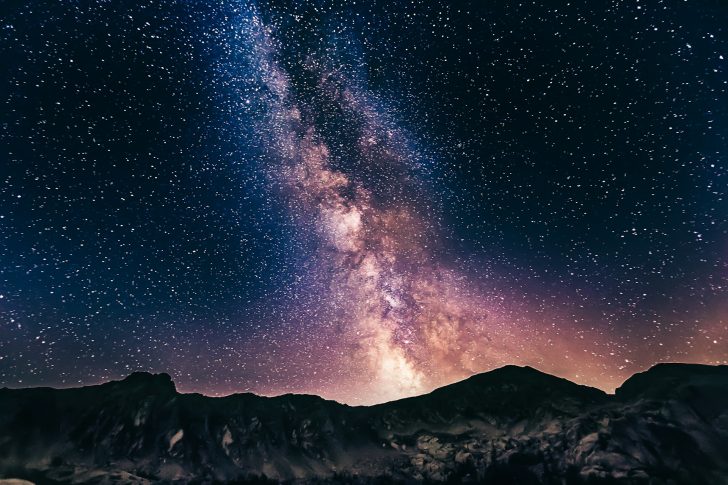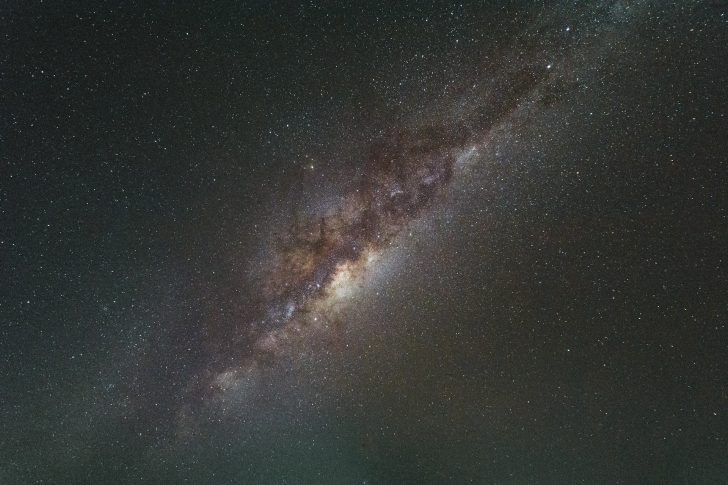The Milky Way might not be doomed after all. For decades, scientists believed our galaxy would crash into its neighbor, Andromeda, in a few billion years. Now, new research says there is a 50-50 chance that it will happen.
Astronomers used to say this was a done deal. Andromeda, speeding toward us at over 100 kilometers per second, was expected to slam into the Milky Way and create a monstrous new galaxy. However, updated computer models and better data paint a more complicated picture. The clash may never happen.
Milky Way May 'Sidestep' a Messy Collision
The new study, published in Nature Astronomy, shows that earlier predictions didn’t consider nearby heavy-hitters in our galactic neighborhood. Galaxies like the Large Magellanic Cloud and the Triangulum Galaxy tug on both the Milky Way and Andromeda, changing the odds.

DNS / Unsplash / Turns out, the Large Magellanic Cloud is swinging around in a way that reduces the chance of impact. Triangulum pulls the other way, nudging Andromeda toward us.
This results in balance. The chances of a crash are now an even split. It might happen, or it might not.
If the Milky Way and Andromeda do smash into each other, the result is chaos on a galactic scale. Their supermassive black holes would merge and grow even bigger. That new black hole could shut down star formation by heating nearby gas too much for it to cool and clump into new stars.
Without stars, no new planets would form. That means no future homes for life as we know it. But if the galaxies pass each other, their black holes stay separate, and star-making can continue.
Earth Will No Longer Exist!
Don’t panic about this. Earth won’t be around when any of this happens. In about five billion years, the Sun will swell into a red giant. That will toast our planet, maybe even swallow it whole. So, whether the Milky Way smashes into Andromeda or swerves away, it won’t affect us.
Still, it is a big deal for the rest of the galaxy. The future shape of the Milky Way and whether it becomes a quiet place or a star-forming machine depends on this massive event, or the lack of one.
Astronomers used the Hubble and Gaia space telescopes to track the speed, motion, and direction of both galaxies. They ran thousands of simulations to test what might happen under different conditions.

Yong / Unsplash / Most of the time, the galaxies pass each other without crashing. Only about 2% of the simulations ended in a full-on head-on collision in five billion years.
About half showed a long-term merger within the next 10 billion years. The rest? A near miss, followed by an endless, spiraling dance.
An Enormous Elliptical Galaxy Could be Born
In the event of a crash, the Milky Way and Andromeda would blend into one enormous elliptical galaxy. Scientists have nicknamed it “Milkomeda.” It would be rounder, puffier, and redder than what we see today. Spiral arms would vanish. Starbirth would slow.
But a miss means the Milky Way could stay pretty much like it is now. Maybe a little warped from the close encounter, but still alive and spinning, with plenty of gas and dust left to create new stars and planets.
For years, the idea of a Milky Way-Andromeda merger was treated as a sure thing. Now we know it's not. This study shows how much we still have to learn about galactic dynamics.
